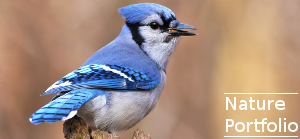While you can definitely use ordinary paintbrushes to paint your model, to get really a really smooth and even finish, you really need aerosol cans, or if you have the money, nothing beats a small automotive spray-gun, like the Iwata HP-G3.
For us modellers, to get a smooth finish, three things are required: sanding, sanding and more sanding.
On this page, I will discuss colours, paint and the three most typical paint methods, including
Colour mixing
Paint & thinners
- Epoxy Paints. In the past epoxy based paints were used, but because of the toxic of the fumes, they are phased out in most countries. Epoxy based paints have one quality that is hard to beat, though. They are nitro- and petrol proof. Epoxy paints are still available in specialty shops in the USA, or so I heard. Some auto-parts shops may have these types of paints as well.
- Latex/Acrylic paints. Most modellers, myself included, use latex/acrylic paints followed by a layer of matte lacquer. These days there is no latex in latex paints, and latex and acrylic paints are more or less identical. Latex paints are water soluble, while acrylic is not. The reason for using these paints is that they are available in 1000’s of colours practically everywhere. If you bring a colour chip to the shop, they will mix the paint to match it perfectly. The quality of the paint depends on how much vinyl is added to the paint. The more vinyl, the cheaper the paint, and the worse the result you will get. Also, you should probably experiment with paint types, brands and thinner, to get the best result.
- Plastic model paints from reliable sources like Humbrol, Tamiya, Vallejo, Mr. Color Paint is expensive, come in tiny paint pots, but they available in colours not available in either epoxy and latex paint. In particular, there is a HUGE range of metallic colours, specifically designed for painting (plastic kit) aircraft. If you thin them and spray them with an airbrush, it is still fairly reasonably priced.
Washes
If you want a realistic model, some dirt will make all the difference. The plastic kit community has been using washes for decades. The idea is that “dirty water” is splashed around the model with a brush, and then wiped off again with tissue paper or a piece of cloth. What is left is darker highlighted grooves, like panel lines. Washes are also used to make your airplane engine look rusty, or the wheels sandy.
Pastel Chalks
Pastel chalks is a little-used alternative to washes. By “pastel chalks” I mean the powdery chalky sticks of colour, not the greasy oily kiddie colours. Basically what you do is to grind up some of the pastel chalks into a fine powder and smear it over the model where you want it to look dirty. Paste chalk based dirt must be lacquered over. Pastel colours are available in boxes of browns and greys, which is great for us modellers.
Lacquers
Practically all aircraft are painted using matte paint to avoid glare from the sun. If your model needs a coat of lacquer, get the right matte type.
Spray guns
A small spray gun works magic when painting a wing or a fuselage. Use masking to avoid overspray. The paint should be diluted to a consistency like milk and sprayed in several thin layers.
Airbrushes
Airbrushes are great for details work. Like with the spray gun, painting with airbrushes requires masking. Special hand-held masks are available, or you can cut your own using normal masking tape. The paint should be diluted to a consistency like milk and sprayed in several thin layers.
Paintbrushes
I have not used paintbrushes for quite some time now. They tend to get an uneven surface, unless you sand between coats. The right thinner or flow-additive help greatly to get a smooth surface.




